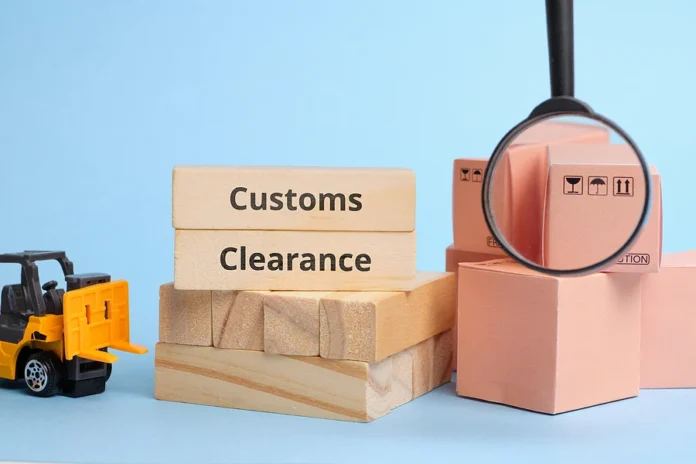Many companies strive to expand beyond their local market in today’s highly competitive business landscape. Thanks to the internet and technological advancements, conducting business globally has become more accessible. However, navigating through various procedures and complying with applicable laws is essential before venturing into international trade. This includes obtaining specific registrations and licenses, such as the import export license, also known as the Importer-Exporter Code.
The IEC license is mandatory for individuals or entities looking to establish an import/export business in India. It is issued by the Director General of Foreign Trade (DGFT) and is represented by a 10-digit code. The license holds lifetime validity and is crucial for importer merchants to legally import goods. Similarly, export merchants can only benefit from the DGFT export schemes and other related advantages with a valid IEC.
Acquiring this license involves adhering to specific procedures and fulfilling necessary documentation requirements. By complying with IEC regulations, businesses can streamline their import/export operation and take advantage of global market opportunities.
When is it required?
1. Customs Clearance for Importers

When importers want to clear their shipments through customs, customs officials require that they provide their IEC as a unique identifier. This allows customs authorities to ensure the legitimacy of the import transaction and compliance with import regulations. This also enables customs officials to track and monitor imported goods, ensuring adherence to customs procedures.
2. Sending Money Abroad
When importers must send money abroad for various reasons related to their import business, banks require them to furnish their import export license. This proves their legitimacy and validates their ability to engage in international trade transactions. Banks can verify the IEC to ensure that the remitted funds are associated with a valid import business and comply with relevant regulations.
3. Customs Port for Exporters
When an exporter plans to send their shipments overseas, the customs port where the export process takes place requires the exporter to provide their import export license. This document is essential for customs authorities to validate the exporter’s eligibility to engage in export activities, record the export transaction, enforce export regulations, and maintain accurate trade statistics.
4. Receiving Foreign Currency Payments

When exporters receive payments in foreign currency directly into their bank accounts for the goods or services they export, their bank requires them to provide their IEC. By doing so, the exporter validates their eligibility to receive foreign currency payments and ensures compliance.
To register for an Import Export Code (IEC), you can follow the steps outlined below
- Visit the official website of the DGFT.
- On the homepage, locate the ‘Services’ tab and click on it to reveal a drop-down menu.
- Select the ‘ import export code Profile Management’ option from the drop-down menu.
- You will be directed to a new page. On this page, click on the ‘Apply for IEC’ option.
- Next, click on the ‘Register’ option. Then click on the ‘Send OTP’ button. An OTP (One-Time Password) will be sent to the registered mobile number or email address provided during registration.
- Enter the OTP received and click on the ‘Register’ button.
- Once the OTP is successfully validated, you will receive a notification containing a temporary password. You can change this password later after logging onto the DGFT website.
- Now, log in to the DGFT website using the registered username and the temporary password provided.
- On the DGFT website, locate and click the ‘Apply for import export code ‘ option.
- Fill out the application form in the ANF 2A format.
- Upload the necessary documents as specified in the application form. These documents typically include proof of identity, address, bank certificate, and other supporting documents.
- Pay the prescribed fees for the import export license registration. The fee amount may vary depending on the category of the applicant, such as individual, company, or partnership firm. Know more About the Fees and registration here.
- Once you have filled out the form, uploaded the documents, and paid the fees, review the information provided, and click the ‘Submit’ button.
- The DGFT will process your application and generate the IEC code. You can check the status of your application on the DGFT website.
- Once the IEC code is generated, you can take a printout of the IEC certificate for your records and future reference.
Commonly required documents for IEC registration:

Certain documents must be provided during registration to obtain an import export license.
- Individuals, firms, and companies require a copy of the Permanent Account Number (PAN) card.
- Depending on the applicant’s status, proof of identity must be provided, including a copy of the voter ID card, Aadhar card, or passport.
- Copies of cancelled cheques from the current bank account must be submitted as proof of the bank account associated with the import/export business.
- Supporting documents must be provided to verify the business premises. This can be in the form of a copy of the rent/lease agreement or an electricity bill that clearly indicates the address of the business premises.
- Finally, a self-addressed envelope must be included to ensure the delivery of the IEC certificate by registered post to the designated address.
Advantages of obtaining an IEC registration
Registering for an import export license can provide businesses with numerous advantages.
1. Business Expansion– The IEC registration opens opportunities for businesses to enter the global market, expanding their operations and exploring international trade prospects.
2. Availing Benefits– Companies can also avail themselves of various benefits offered by entities such as the Directorate General of Foreign Trade (DGFT), Export Promotion Councils, and Customs.
3. No Return Filing– Furthermore, IEC registration does not require filing any returns, making it a hassle-free process.
4. Easy Processing– Obtaining an IEC code is a straightforward process that typically takes 10 to 15 days.
5. Lifetime Validity– Once obtained, the IEC code remains valid for the entity’s lifetime, providing a long-term solution for international trade operations.
Summary
Amazon Global Selling is a platform that simplifies the exporting process from India. It provides comprehensive support and guidance to sellers and MSMEs throughout their export journey. By becoming an Amazon Global Seller, exporters can reach over 300 million customers worldwide and expand their international business. One of the significant advantages of this platform service is its assistance in obtaining import export license documents. The program streamlines the process and provides guidance to ensure international trade regulations and standards compliance.
It also simplifies the product listing process, enabling sellers to showcase their products to a global audience and attract potential customers. Moreover, it offers logistics support and reliable shipping solutions, making international shipping hassle-free for exporters. Overall, this service opens up immense opportunities for Indian exporters to increase their visibility, generate sales, and expand their business globally.










